Primate Evolution
Genetic evidence suggests that the first primates may have evolved around 80 million years ago. Transitionary forms with a mix of non-primate and primate-like characteristics have been discovered in the fossil record dating to around 60 million years ago.
These forms are known as Plesiadapiformes. The non-primate traits included small brains, eye sockets on the side, and no postorbital bar, which is a bony ring that encircles the eye.
Some forms also had large rodent-like lower incisors. Primate traits included some forms having generalized teeth while other forms had a grasping foot with an opposable big toe, long grasping fingers, and a nail rather than a claw at the end of the first foot digit.
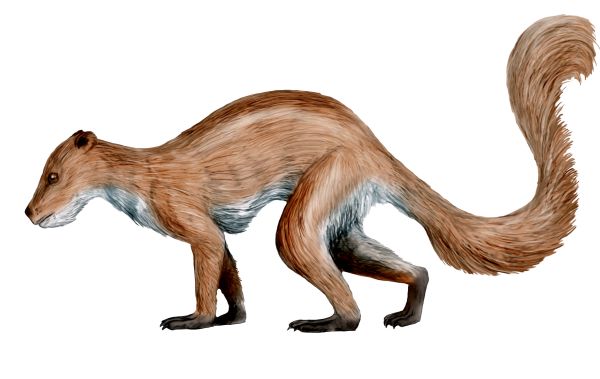
Nobu Tamura, CC BY-SA 3.0, via Wikimedia Commons
Early Primates
The first definite primates evolved by around 55 million years ago. These primates are called euprimates, or primates of modern aspect, also known as true primates. Fossils of these primates have been found in what are now the regions of North America, Europe, and Asia. They are identified as primates, and more specifically, Strepsirhines, because they had larger brains, the eyes had moved forward to the front of the face, they had a postorbital bar, and the snout was reduced. They also had an opposable big toe, and nails, rather than claws on most, or all, digits. These forms are divided into two main superfamilies, Adapoidea and Omomyoidea, with perhaps 200 species.
The Adapoidea, or Adapids, were kitten and cat-sized with many similarities to today’s lemurs. Some researchers believe Adapids might be the general primate ancestor.
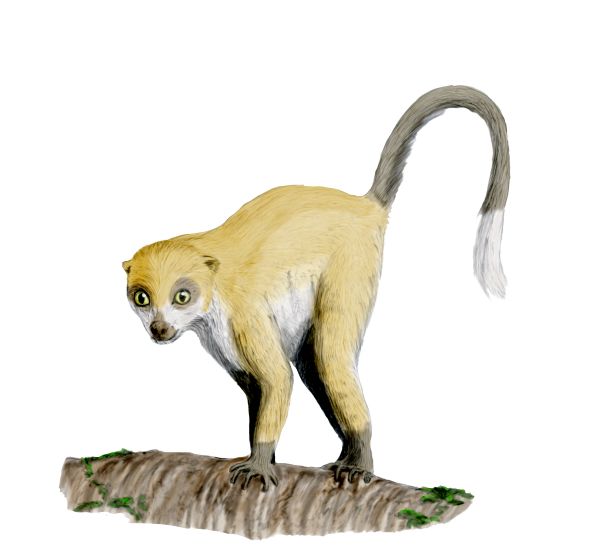
Nobu Tamura, CC BY-SA 3.0, via Wikimedia Commons
The Omomyoidea, or Omomyids, were smaller than squirrels, and share many similarities with today’s tarsiers. It is believed that they might be the Haplorhini ancestor for both tarsiers and anthropoids, although some researchers dispute the anthropoid connection.
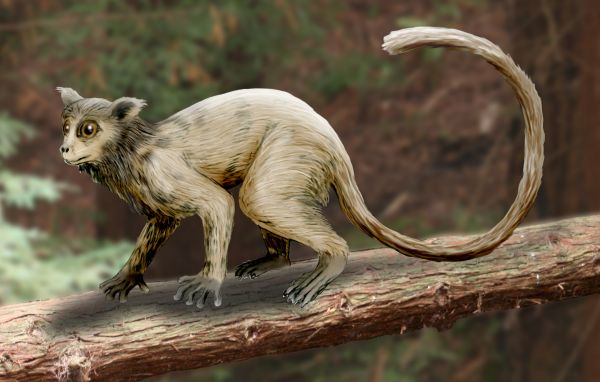
Nobu Tamura, CC BY-SA 3.0, via Wikimedia Commons
Early Monkeys
Early monkeys date to approximately 34 to 23 million years ago. Most of the evidence on early monkey forms comes from the Fayum, an area in Egypt. This area is now a desert, but it was a lush tropical forest during this time period. Three primary families of primates have been identified including Parapithecidae which were small primates that were squirrel-sized, and often weighed less than three pounds. The premolars were still Strepsirhini-like, but several other tooth characteristics were monkey-like. They also had small brains. Some researchers believe that Parapithecidae were the last common ancestor of today's monkeys found in Africa and Asia (also known as Old World monkeys) and monkeys found in Central and South America (also known as New World monkeys).
A second family identified from this region is the Propliopithecidae, who are believed to have evolved from Parapithecidae. Propliopithecidae have many features similar to today's African and Asian monkeys and apes, and some researchers believe that this family, specifically the genus Aegyptopithecus, includes the ancestors of these forms. Similar features between the Propliopithecidae and today's Old World monkeys and apes include two premolars in each quadrant of the mouth.
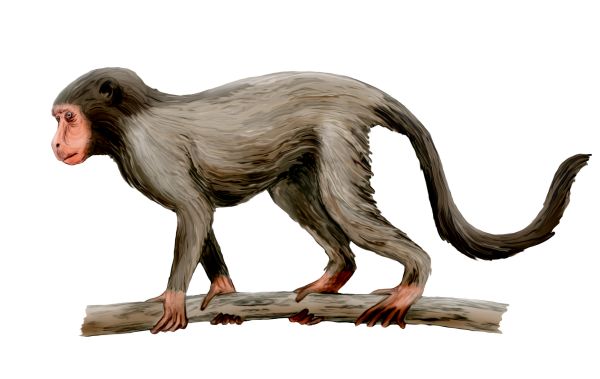
Nobu Tamura, CC BY-SA 3.0, via Wikimedia Commons
Early Apes
Transitional forms between monkeys and apes date to around 20 million years ago. One of the earliest of these ape-like forms is Proconsulidae which lived from approximately 22 to 17 million years ago. This family represents a form that is often called a dental ape, also known as a proto ape, in which the teeth were ape-like (the molars had a Y-5 pattern), and it lacked a tail, but the rest of the features were monkey-like.
Many researchers believe that this family, which includes at least 10 genera and 15 species, contained the possible ancestor to today's apes, including humans.
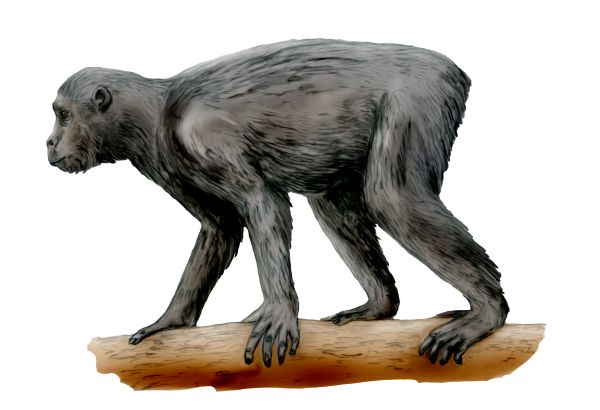
Nobu Tamura, CC BY-SA 3.0, via Wikimedia Commons
Later Apes
Dating between 17 to 9 million years ago more than 100 ape species have been identified in Africa, Europe, and Asia including Afropithecus sp. which was the earliest ape-like primate to leave Africa and was a member of the Proconsulidae family. Remains of this genus have been found in both Kenya and in Saudi Arabia dating to 17 million years ago. Remains that look similar to the orangutan (for example, Sivapithecus sp) have been recovered from Asia and date to 13 million years ago. A major ape group in Europe dating to between 14 to 9 million years ago is known as the Dryopithecids. One genus in this group, Dryopithecus sp. is an arboreal ape with many features similar to modern great apes including a body and brain size similar to a chimpanzee. Their forelimbs, as well as grasping hands and feet, allowed them to easily move through the trees like modern great apes. Due to the similarities with today's African apes, some researchers have proposed that this ape is the African ape ancestor. The fossil record from this time period is sparse in Africa. One ape genus that has been identified is Chororapithecus sp. which has been dated to approximately 10.5 to 10 million years ago. Its teeth are very similar to gorilla teeth and some researchers believe that this genus is the ancestor to the modern gorilla.
Another African ape is Nakalipithecus sp. which has been dated to 9.9 to 9.8 million years ago in Kenya. Some researchers argue that it is the last common ancestor of modern African apes. The debate on which forms are ancestral to modern African apes will continue until more data are recovered.
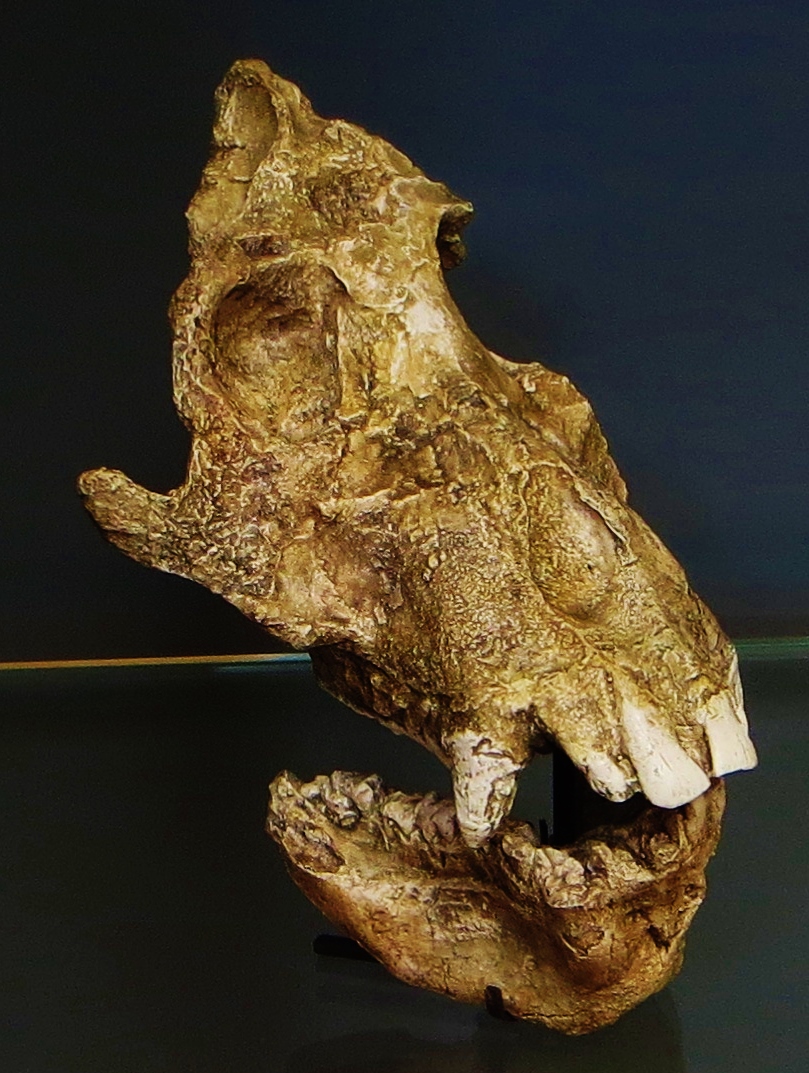
Ghedoghedo, CC BY-SA 3.0, via Wikimedia Commons
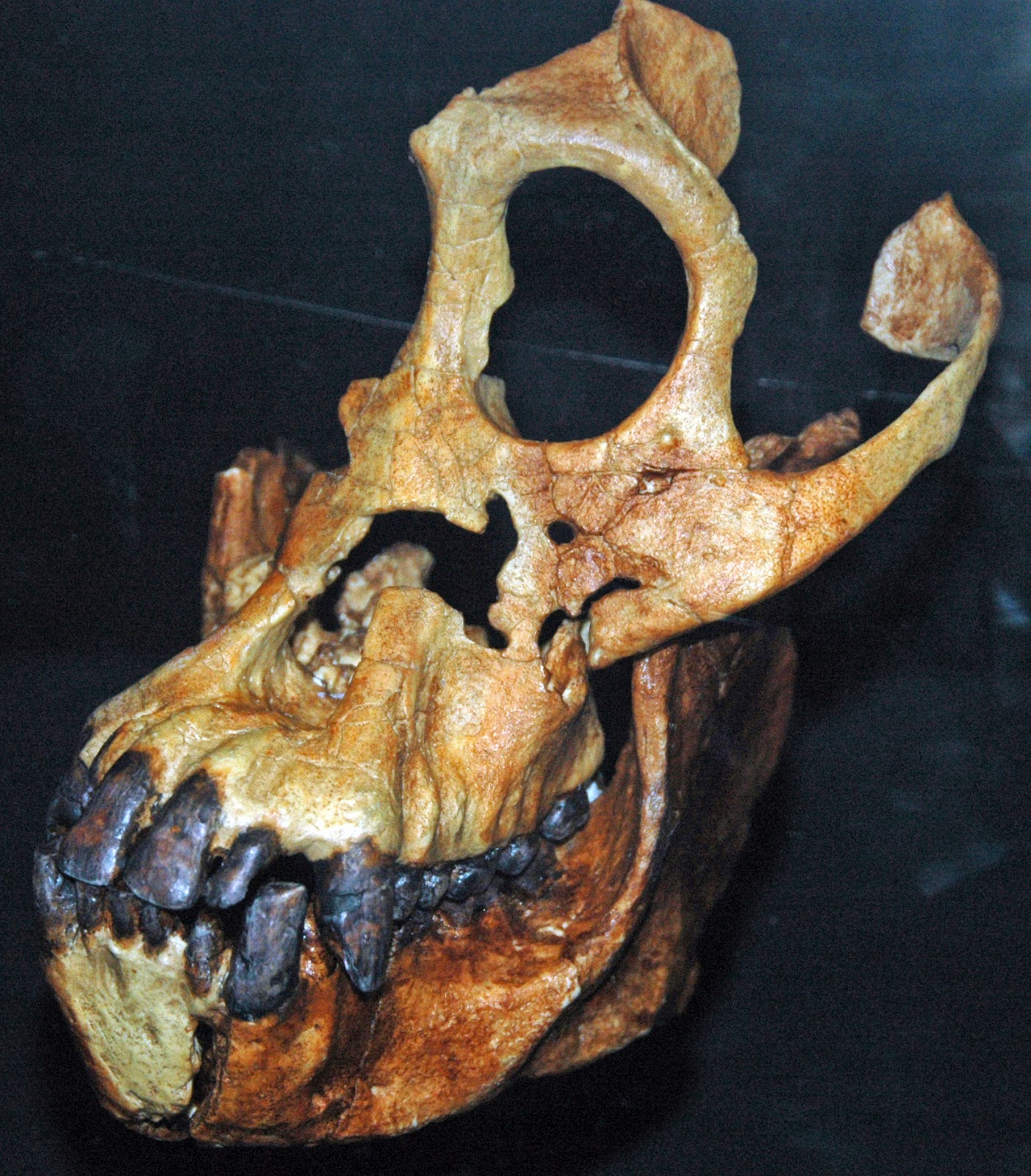
James St. John, CC BY 2.0, via Wikimedia Commons

